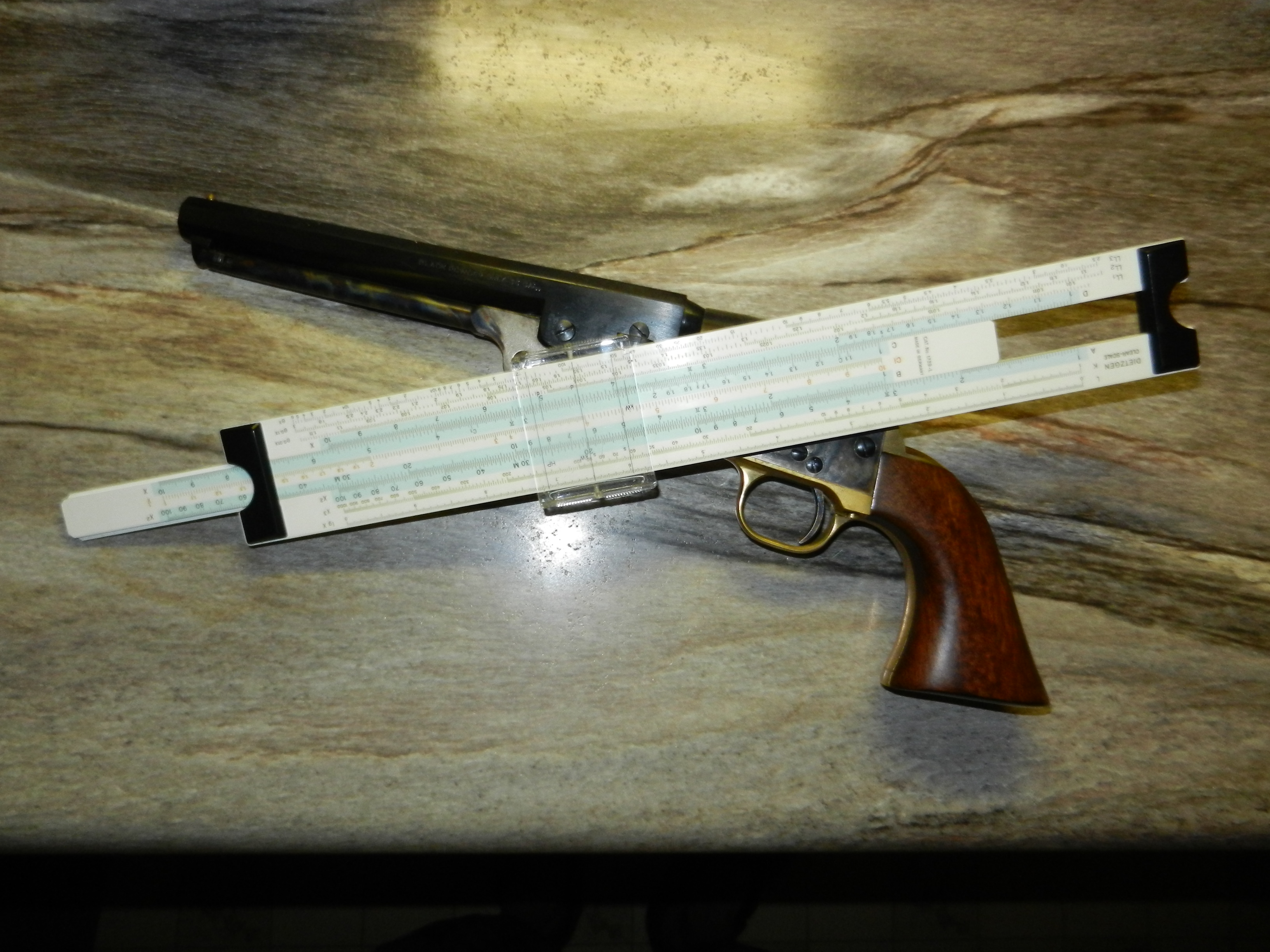I can just see ole Dan'l Boone and the boys sitting around the campfire using that formula to get the correct patch size!!!! 









Hey Zonie, Thank you for this! All the best, Rodgers RangerFor the math geeks and anyone else interested, here's how I figure out the patch size for loading a round ball.
(r X 3.14) + D = Patch diameter. (r is 1/2 if the bore size. Divide the bore size by 2 to get r. D is the bore size).
This gives the mathematical value based on the patch being wrapped around the lower area of the ball and then extending up the bore until it is flush with the muzzle.
View attachment 21089
Using this method for a .50 caliber gun, the r value would be .50/2 = .25
Pi or 3.14 X .25 = .785
.785 + .50 = 1.285
1 1/4 is close enough to the 1.285 for what we want to do so, use a 1 1/4 diameter patch for your .50 caliber gun.
A little bit big or small doesn't matter much when it comes to patch sizes so this size patch will work fine for a .45 caliber gun too.
Aww man!! I didn’t think there’d be no maffs today!!
For folks who don't quite have a good understanding of how to convert a mathamatical formula into action, if a person has a cheap modern calculator, here's how to calculate a patch size. I'll give it in keystrokes for a .50 caliber rifle:
Poke the keys in this order. Include the times sign (X) , the plus sign (+) or divide sign (÷) and the equals sign (=) as shown. When you poke one of these signs, the calculator will do any previously entered operation all by itself:
3.14 X .25 + .50 =
If you try this, your answer should be 1.285
If your working with a caliber that isn't easy to figure the radius of like a .54, let your calculator figure out the radius first.
Your calculator can do this if you change the keystrokes to:
.54 ÷ 2 X 3.14 + .54 =
If you try this, your answer should be 1.3878
Of course you don't need an answer out to the ten thousandth of an inch like that one so just using the first two numbers after the decimal point will be more than good enough for figuring out the size of a patch. With this in mind, that 1.3878 would be 1.39 or just a little bit larger than 1 3/8" and 1 3/8" would be good enough.
That's the way I do it, but I like Zonies math better.Smokey, just cut one in your loading block then punch it out and measure it with a tape measure.

Awesome! I would appreciate that.
On using square patches, would one expect any difference in accurate shooting over using a rounded patch?
Cut on the muzzle
Cut square
Austrian military rifles used precut triangular.
Load a shooting block first
Buy precut from a supply house, their pretty cheap.
Been doing this forty five years now never had a punch
IMHO its a gimmick you don’t need.
Hole punch kits for cheap @ Harbor freight 15 sizes for under $15.00
You know I’ve seen folks that won’t run ball , as you can buy them in any size you want, but I enjoy running ball, often do it in back yard over my brazier.But Tenn, I like round patches, and I like making them.